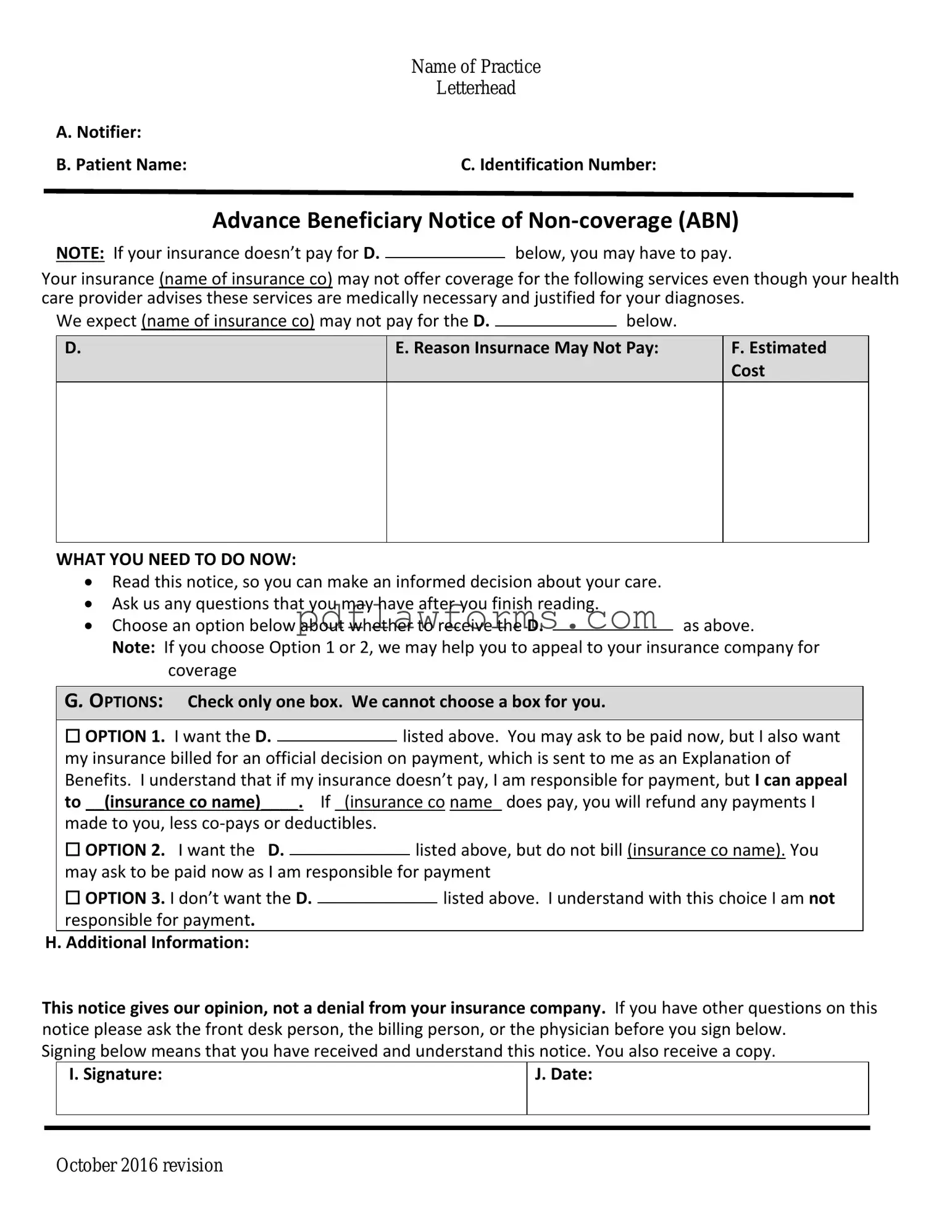The Advance Beneficiary Notice of Non-coverage (ABN) form plays a crucial role in the Medicare system, serving as a communication tool between healthcare providers and patients. This form is issued when a provider believes that a specific service or item may not be covered by Medicare, giving patients a heads-up about potential out-of-pocket costs. By signing the ABN, patients acknowledge that they understand the possible financial implications and agree to take responsibility for payment if Medicare denies coverage. The form also outlines the reasons for non-coverage, helping patients make informed decisions about their healthcare options. It is essential for individuals to carefully review the information provided in the ABN, as it can influence their treatment choices and financial planning. Understanding this form not only empowers patients but also fosters better communication with healthcare providers, ensuring that everyone is on the same page regarding coverage and costs.
